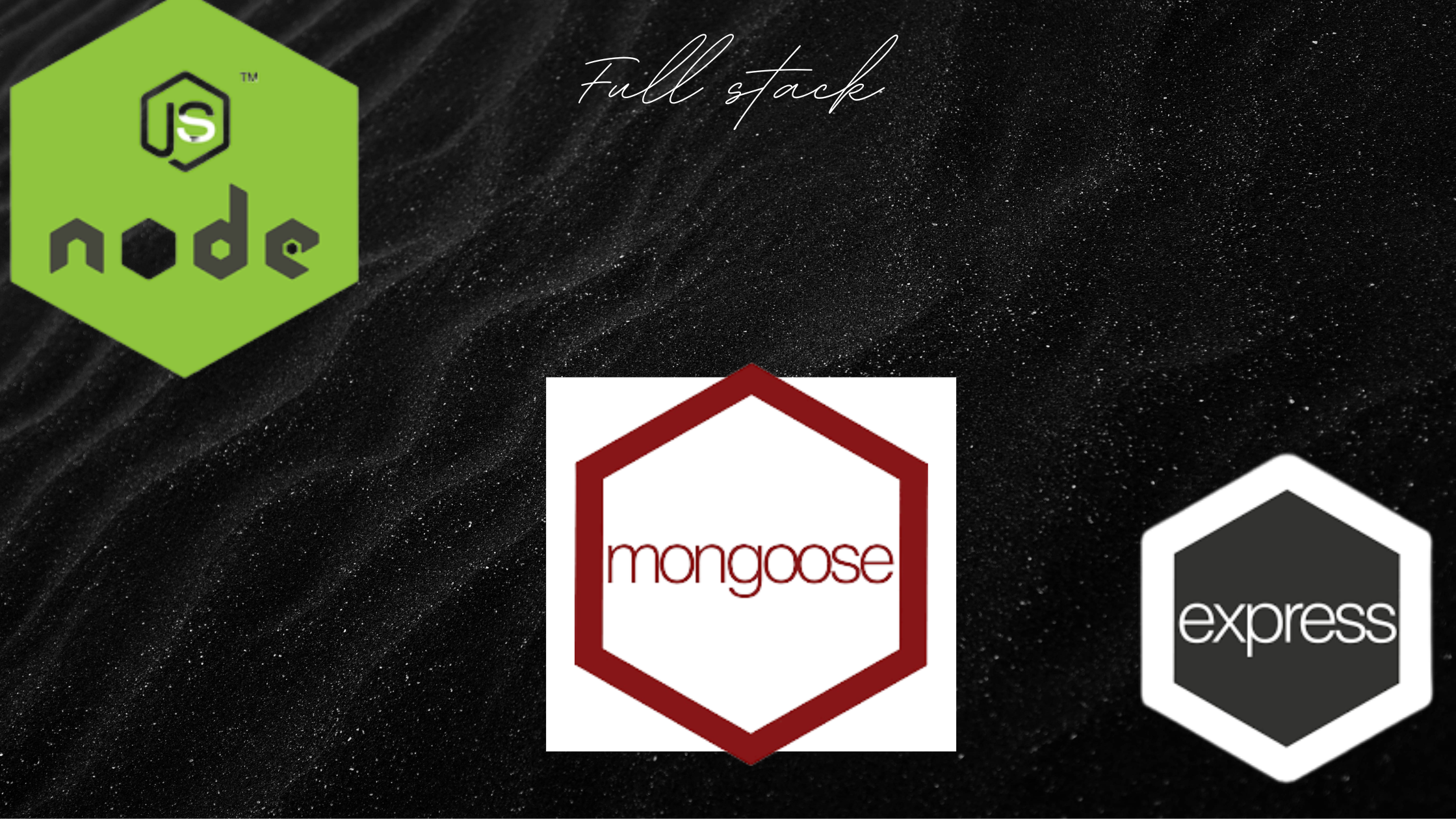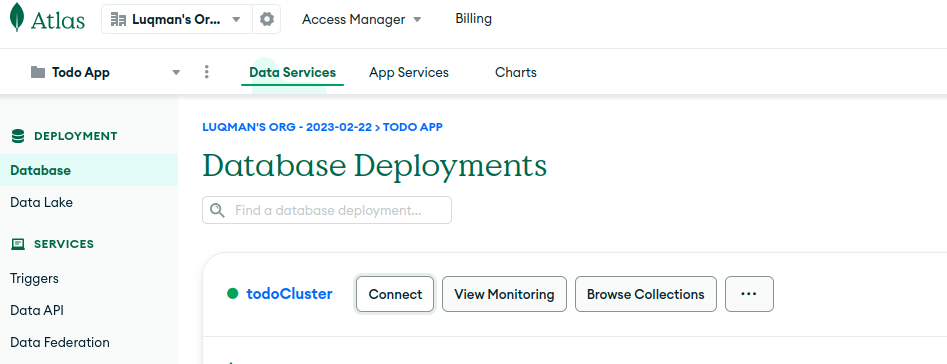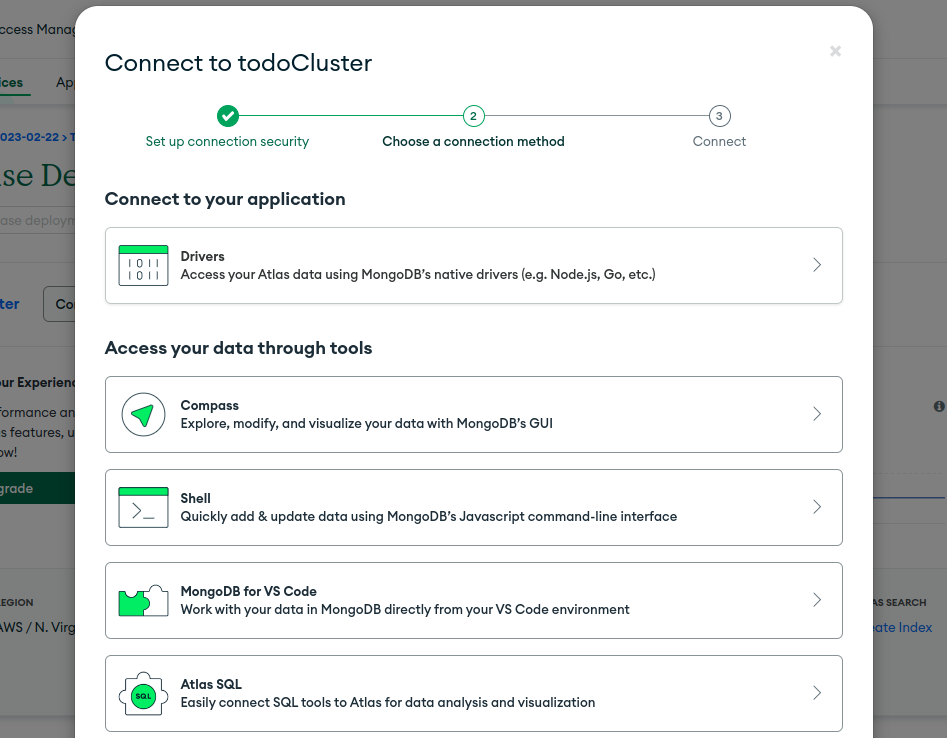Connecting Node.js To MongoDB Atlas Using Mongoose: A Step-by-Step Guide
 Luqman Shaban
Luqman Shaban
In an era driven by data, where information reigns supreme, harnessing the potential of Node.js and MongoDB Atlas has become a cornerstone for developers. As Node.js empowers the creation of scalable, high-performance applications, MongoDB Atlas offers a robust, cloud-based database solution. And what connects these powerful technologies seamlessly? Mongoose, the elegant modeling library for MongoDB and Node.js. In this article, we will delve into the art of connecting Node.js to MongoDB Atlas using Mongoose, unraveling the steps, techniques, and best practices to unlock a world of endless possibilities in modern web development.
Let's begin by creating our project folder and initializing a package.json file:mkdir nodejs-mongodb cd nodejs-mongodb npm init -y
Executing the following command to create a file and a folder:touch index.js mkdir config
Next, install the necessary dependencies:npm i express mongoose dotenv nodemon
Open the folder in Vscode: code .
In the root folder, we need to create a .env folder that will store our Atlas connection string. If you don't have an Atlas account yet, create one and deploy a cluster. Navigate to your cluster and click on connect:

Choose the first option Drivers:

Choose the highest version of Node.js and copy your connection string.
In Vscode, open the .env file and create a variable DB_STRING and paste your connection string:
DB_STRING=mongodb+srv://blogall:<your user password>.@cluster0.oxdey6v.mongodb.net/?retryWrites=true&w=majority
Make sure to exclude the <> tags after inserting your password
Open the config folder and create a db.js file and import the following:
import dotenv from 'dotenv';
import mongoose from 'mongoose';
Load the environment variable and store the connection string in a variable:
dotenv.config()
const connectionString = process.env.DB_STRING
Create a function that connects to the atlas database and export it:
const connectToDB = async () => {
try {
await mongoose.connect(connectionString, {
autoIndex: true
})
console.log('Connected to Mongodb Atlas');
} catch (error) {
console.error(error);
}
}
export default connectToDB
The provided code snippet is an arrow function named connectToDB, which is responsible for establishing a connection to MongoDB Atlas using Mongoose in a Node.js application. Here's a breakdown of what the code does:
The
connectToDBfunction is defined as an asynchronous function using theasynckeyword. This allows the use ofawaitinside the function to handle promises in a more readable and synchronous-like manner.Inside the function, there is a
try-catchblock, which is used for error handling. The code inside thetryblock attempts to establish a connection to the MongoDB Atlas database.The connection is established using the
mongoose.connect()method, which takes two parameters: theconnectionStringand an options object. In this case, the options object includesautoIndex: true, which enables automatic indexing of MongoDB documents for better query performance.If the connection is successful, the code inside the
tryblock executes, and a success message, "Connected to Mongodb Atlas," is logged to the console.If an error occurs during the connection attempt, the
catchblock is executed. The error object is logged to the console usingconsole.error().
Finally, the connectToDB function is exported as the default export using export default. This allows other parts of the application to import and use this function for establishing the database connection.
Here's how the file looks:
import dotenv from 'dotenv';
import mongoose from 'mongoose';
dotenv.config();
const connectionString = process.env.DB_STRING;
const connectToDB = async () => {
try {
await mongoose.connect(connectionString, {
autoIndex: true
})
console.log('Connected to Mongodb Atlas');
} catch (error) {
console.error(error);
}
}
export default connectToDB
In index.js, import the following:
import express from 'express';
import connectToDB from './config/db.js';
Create an instance of express, and call connectToDB function:
const app = express();
connectToDB()
To run the server add the following code:
app.listen(3000, () => {
console.log('Server started on port 3000');
});
The above snippet will run your application on localhost:3000 in the browser.
Here's how the file looks:
import express from 'express';
import connectToDB from './config/db.js';
import router from './routes/UserRoute.js';
const app = express();
connectToDB()
// Start the server after successfully connecting to the database
app.listen(3000, () => {
console.log('Server started on port 3000');
});
Configure the package.json file and add the following:"type": "module", "scripts": {"test": "echo "Error: no test specified" && exit 1","start": "nodemon app.js"},
Open your terminal in Vscode and execute the following command: npm start
You should see the following:Server started on port 3000 Connected to Mongodb Atlas
In this article, we delved into the art of connecting Node.js to MongoDB Atlas using Mongoose, unraveling the steps, techniques, and best practices to unlock a world of endless possibilities in modern web development.
Starting from setting up the project folder and initializing the package.json file, we walked through the process of installing the necessary dependencies. We then created the .env file to store the Atlas connection string and established the database connection in the config/db.js file using the connectToDB function.
Moving on, we imported the required dependencies in the index.js file, created an instance of Express, and called the connectToDB function to establish the database connection. We also added code to start the server and configured the package.json file to enable running the application using npm start.
Upon executing the command npm start in the terminal, we successfully started the server on port 3000 and received the confirmation that we were connected to MongoDB Atlas.
By following these step-by-step instructions, you are now equipped with the knowledge and tools to connect Node.js to MongoDB Atlas using Mongoose. You can further expand upon this foundation to build powerful, data-driven applications that leverage the capabilities of both Node.js and MongoDB Atlas.
Happy coding!
Subscribe to my newsletter
Read articles from Luqman Shaban directly inside your inbox. Subscribe to the newsletter, and don't miss out.
Written by

Luqman Shaban
Luqman Shaban
About I am a software developer with a passion for creating innovative and user-friendly applications. I am currently enrolled in a Diploma in Software Development at the Institute of Software Technology, and I have also completed the Meta Front End Development Course. I am proficient in a variety of programming languages and technologies, including HTML, CSS, JavaScript, React, Node.js, Express, Sequelize, and MySQL. I am also a quick learner and have strong communication skills. I am passionate about software development because I enjoy the challenge of solving problems and creating solutions that make people's lives easier. I am also motivated by the opportunity to work on innovative projects and contribute to the development of new technologies. If you are looking for a talented and dedicated software developer, I would be happy to discuss how I can contribute to your team. Please connect with me on LinkedIn or visit my portfolio to learn more about my work.